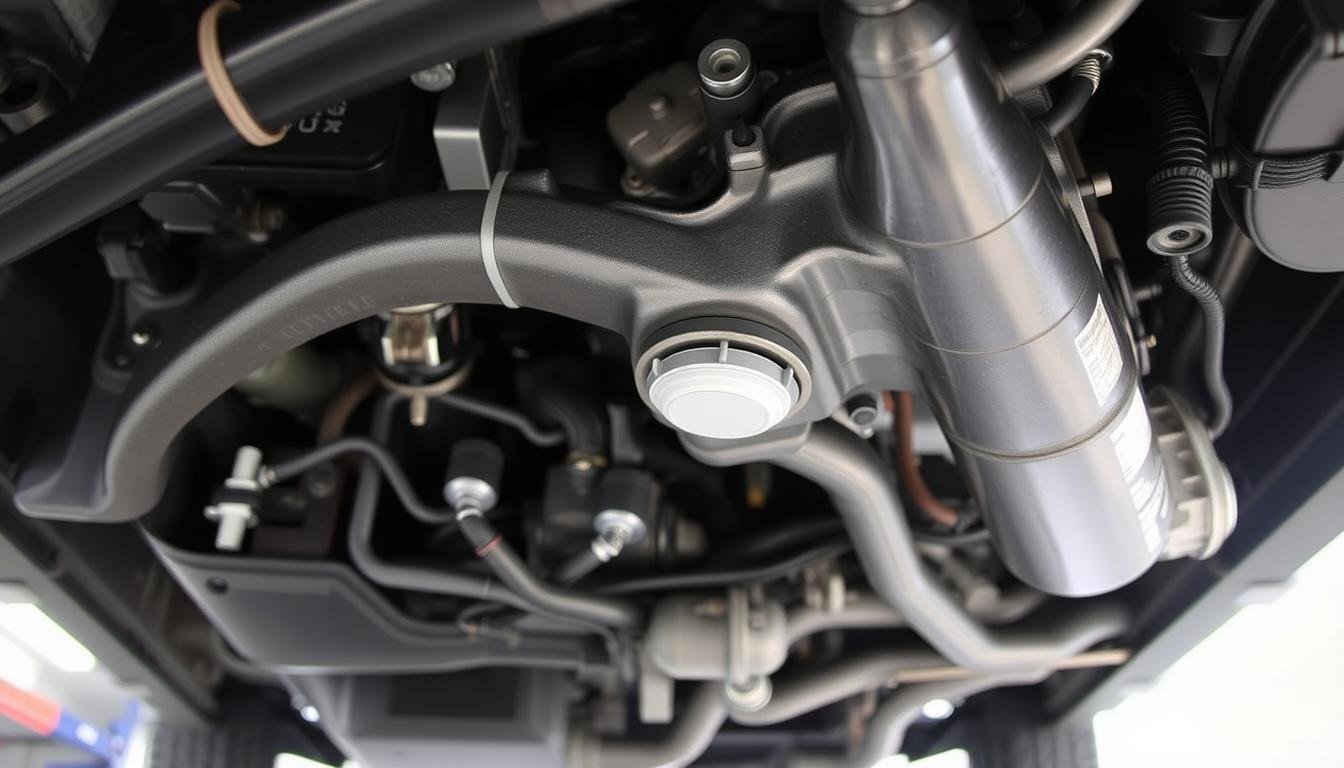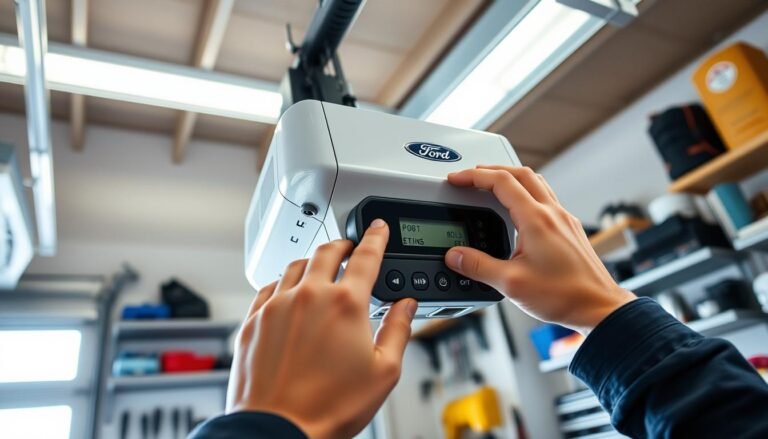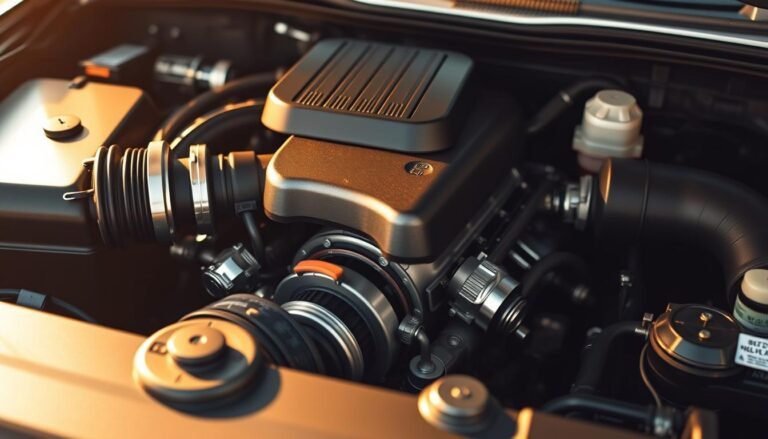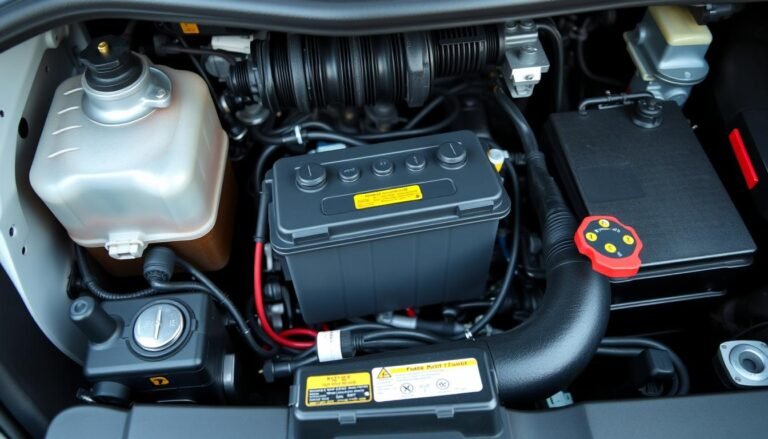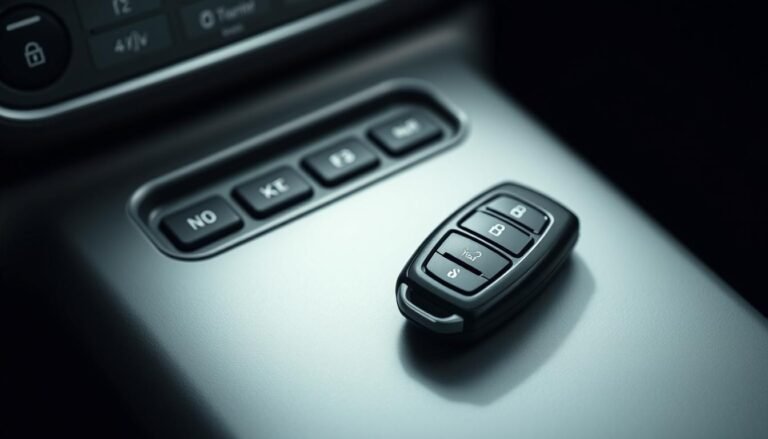Where The Ford Transmission Speed Sensor Location? Exclusive 7 Guide
The Ford transmission speed sensor sits on the transmission case. It’s key to how your vehicle’s transmission works.
Knowing where the Ford transmission speed sensor is matters a lot. It helps those wanting to keep or fix their car do a great job.
We’re going to look at different Ford models and tell you exactly where the sensors are. With our help, you’ll find and fix your Ford speed sensor with ease.
This guide is here to help, whether you have a Ford F150, Excursion, or Ranger. You’ll have the info you need to be confident in what you’re doing.
Ready to learn more about your Ford? We’ll go over each model to make things easy for you.
We’ll guide you through finding, replacing, and fixing your Ford transmission sensor. Let’s dive in and work towards making your drive smoother!
What is The Ford Transmission Speed Sensor?
The Ford transmission speed sensor is key to how your car works. It checks how fast the output shaft spins.
This data helps control engine performance by making gear shifts better. With this sensor working right, gears change smoothly when they should.
If it fails, you might notice bad shifting, less fuel efficiency, and harm to the transmission. Knowing about this sensor shows why it’s vital for a smooth ride in your Ford.
Importance of The Transmission Speed Sensor
The transmission speed sensor is key for your car’s transmission to work right. It watches the speed at which the transmission’s output shaft spins.
This info helps the engine control unit (ECU) make gear changes smoother and boosts your car’s performance.
A working speed sensor is a must. If it breaks, your car might shift gears weirdly, slow down, or even harm the transmission.
Catching any sensor issues early is crucial to keep your car running well. This can save you a lot of money in repairs.
Knowing where the ford sensor is can save you time and trouble. If you know where it is, you can fix or check it faster. This keeps your car running well without delays.
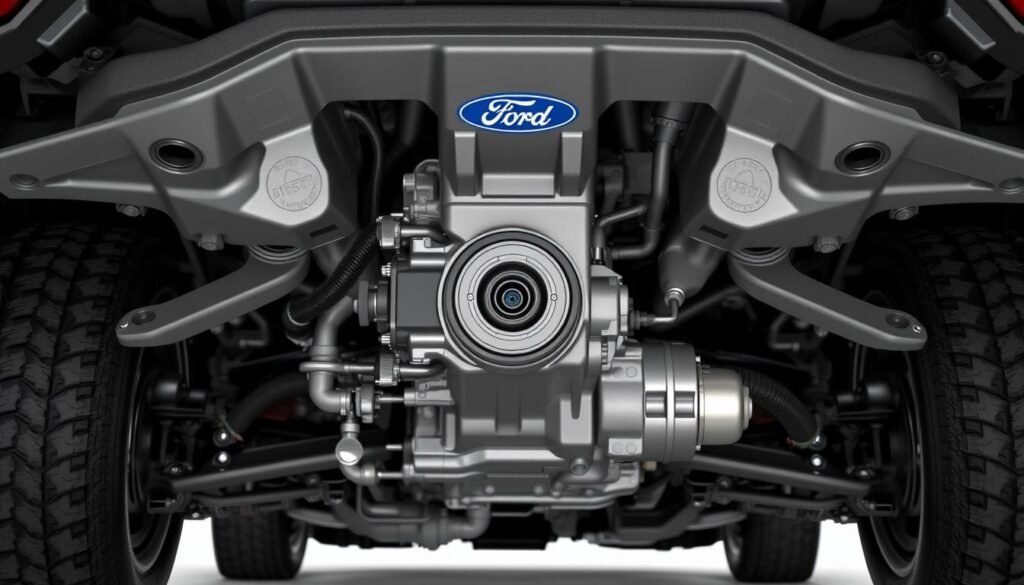
General Location of Ford Transmission Speed Sensors
The location of the ford transmission speed sensor is crucial for keeping your vehicle in top shape.
You’ll usually find the sensor on the transmission case, right where it connects to the transfer case in four-wheel-drive vehicles.
In others, it’s placed on the tailshaft housing. Knowing where to find this sensor makes fixing problems a lot easier.
By pinpointing its exact spot, you can get to it fast during repairs. This means you can solve any issues without delay.
| Model | Sensor Location |
|---|---|
| Ford F150 | Tailshaft housing |
| Ford F350 | Transmission case near transfer case |
| Ford Ranger | Located on the transmission case |
| Ford Excursion | Near the transfer case |
Ford Transmission Speed Sensor Location in Popular Models
Knowing where the ford speed sensor is can help keep your car running smoothly. Every Ford model has its own setup. Here are the locations for some well-known Ford models.
2000 – 2005 Ford Excursion
For the Ford Excursion, the sensor is usually at the transmission’s back end. You might have to lift the car to get a good look.
1998 – 2004 Ford F150 Truck
The 1998 to 2004 Ford F150 has its sensor by the driver’s side on the transmission case. This spot is easy to reach if you need to check or replace it.
1999 – 2004 Ford F350 Super Duty Truck
In the Ford F350 Super Duty Truck, the sensor sits close to the tail shaft, like the F150. Its location allows it to accurately track the vehicle’s speed, even under heavy loads.
1997 – 2011 Ford Ranger
The sensor for the 1997 to 2011 Ford Ranger is at the transmission’s rear. It’s an easy spot to get to, making it simpler for owners to service or replace it.
| Model | Ford Speed Sensor Location |
|---|---|
| 2000 – 2005 Ford Excursion | Towards the rear of the transmission |
| 1998 – 2004 Ford F150 Truck | Near the driver’s side on the transmission case |
| 1999 – 2004 Ford F350 Super Duty Truck | Near the tail shaft |
| 1997 – 2011 Ford Ranger | At the rear of the transmission |
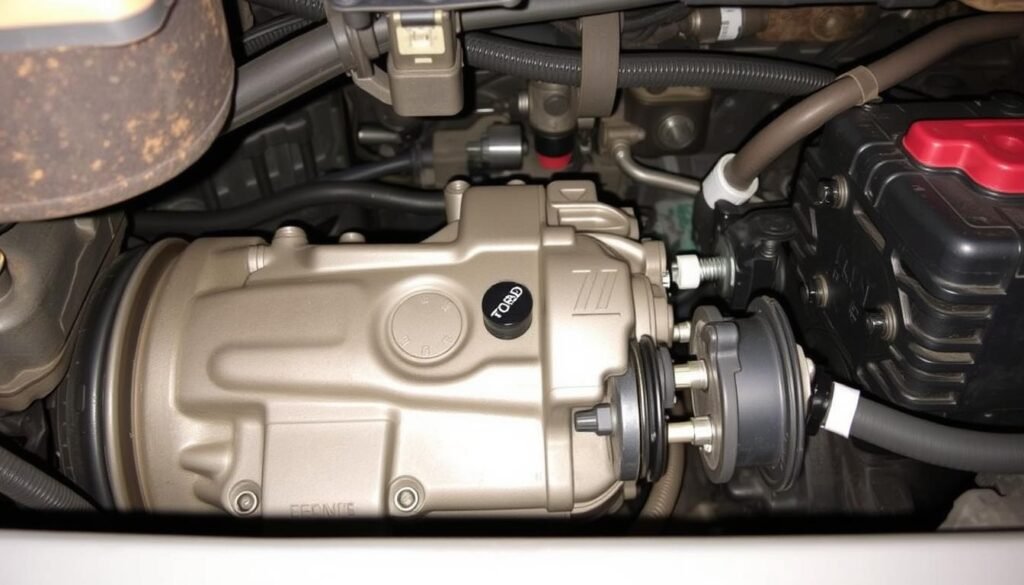
Ford Transmission Speed Sensor Location Guide
Locating the speed sensor in your Ford vehicle is key for top performance. This sensor location guide makes it easy to find the speed sensor in various models.
It ensures quick and effective repairs and replacements. Mostly, you’ll find speed sensors near the transmission or differential.
But, the exact spot can change based on the model year and design. Knowing where to look makes it easier to get to the sensor. This is crucial for fixing transmission problems right.
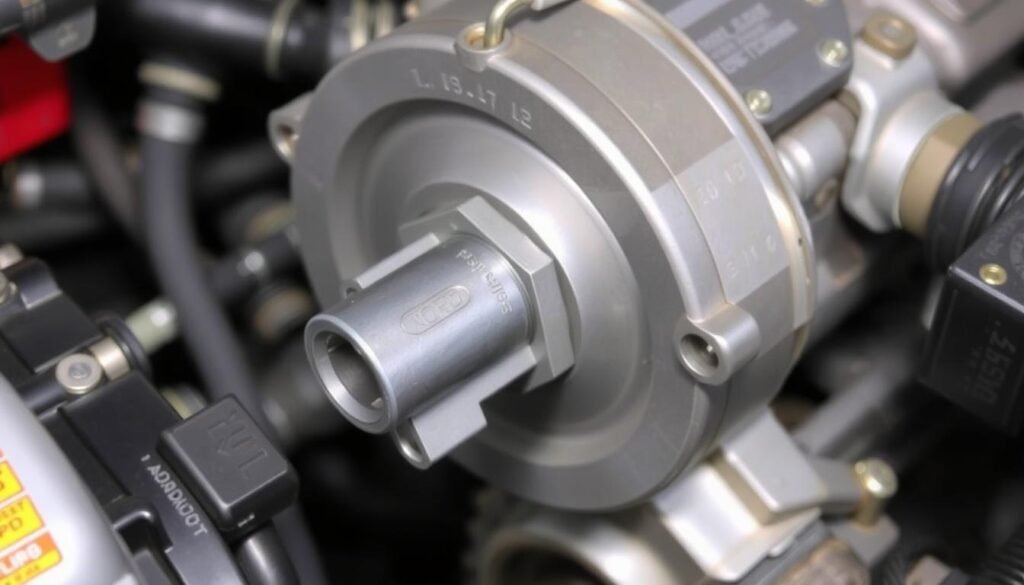
To pinpoint the sensor, check your vehicle’s service manual. It has the precise ford vehicle speed sensor location. Being familiar with these spots saves time and makes repairs smoother.
Step-by-Step Guide To Locate the Speed Sensor
Finding the speed sensor in your Ford is key for fixing transmission problems. This guide offers easy steps for locating it, so you can figure out the issue. First, collect all tools you’ll need.
Tools Required For The Job
To work on the speed sensor, you’ll need a few tools. Ensure you have these tools ready before starting:
- Socket set
- Ratchet
- Torx bits (especially T30)
- Penetrating oil
- Flat blade screwdriver
With these tools, you can smoothly go through the process. This lets you focus on finding the sensor without any stops.
Identifying The Sensor in Different Models
Start by getting to your car’s undercarriage. You can usually see the transmission housing from there. Knowing how your model is laid out helps you see where the sensor might be.
It’s wise to look at the manuals or videos specific to your vehicle. They give more details on finding the sensor in your specific car.
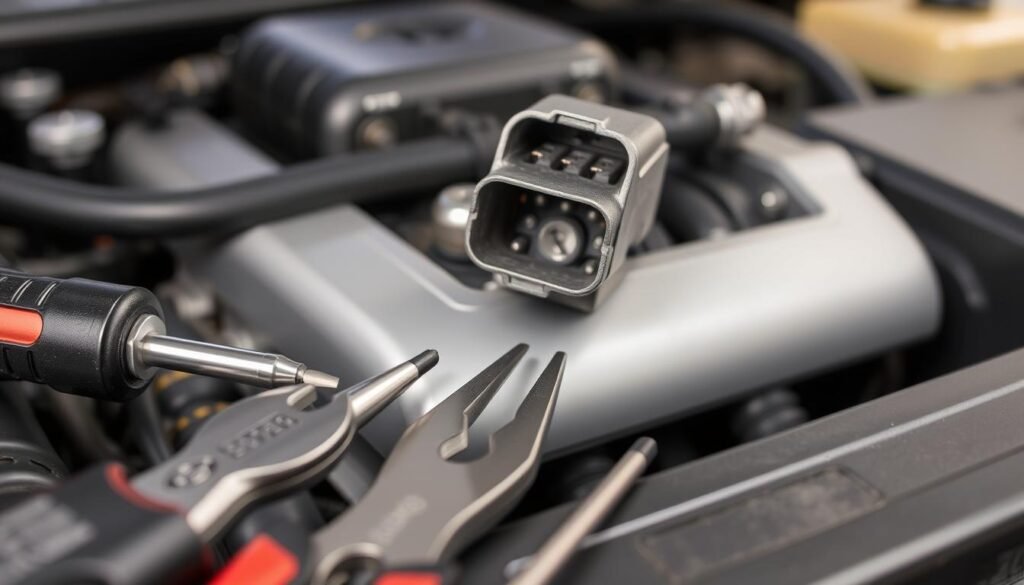
Common Issues Related To Ford Speed Sensors
Ford speed sensor problems can pop up as these parts get older or hurt. Wiring issues are common, leading to wrong readings or the sensor not working at all.
Elements like water can cause rust, messing up electrical links and sensor work. Also, the sensor might break down over time. When speed sensors act up, signs can vary.
You might see weird speedometer readings, changes in how the car runs, and trouble shifting gears.
Sometimes, dashboard warning lights will turn on to alert you of problems. Seeing these symptoms early helps avoid bigger issues in your car’s transmission.
Ford Speed Sensor Replacement Process
Replacing your Ford’s speed sensor can make it perform better and read speeds more accurately. It’s important to know how to prepare and install it correctly.
Preparing for Replacement
First, park on a flat area and lift your vehicle for easy access to the speed sensor. Turn off the battery to avoid electric shocks. Make sure you get a new speed sensor that fits your Ford model exactly.
Installing the New Speed Sensor
When installing, place the new sensor where it belongs. Put some transmission fluid on the O-ring to help it seal better.
Push the sensor in until it’s secure. Use a torque wrench to tighten the screws just right. After that, plug the electrical connector back in and check that everything is in place correctly.
By following these steps, you can successfully change the speed sensor and improve your Ford’s performance.
| Step | Description |
|---|---|
| 1 | Park on level surface and secure vehicle. |
| 2 | Disconnect battery for safety. |
| 3 | Gather new speed sensor replacement. |
| 4 | Align the new sensor with housing. |
| 5 | Lubricate O-ring with transmission fluid. |
| 6 | Carefully press sensor into place. |
| 7 | Tighten fastening screws with torque wrench. |
| 8 | Reconnect electrical connector and ensure proper seating. |
Ford Speed Sensor Troubleshooting Tips
If you think your Ford speed sensor has issues, start by figuring out the problems. You might notice weird speedometer readings or issues when shifting gears.
Knowing these signs is the first step in troubleshooting your Ford speed sensor.
Diagnosing Faulty Speed Sensors
To find out if a speed sensor is not working right, start by checking for error codes. These codes tell you if something’s wrong with the speed sensors.
Make sure to watch out for these steps closely:
- Look at the wiring harness for any signs of wear, such as corrosion or loose connections, which could cause incorrect readings.
- Check the sensor itself for any damage or dirt that might stop it from working right.
- Use a multimeter to test the speed sensor’s resistance and see if it’s still good.
- Look in your car’s manual for specific advice on how to check speed sensors and their wiring.
Following these steps will help you solve any problems with your speed sensor. This advice gives you a full plan to make sure your speed sensors work as they should.
Conclusion
Knowing where the ford transmission speed sensor is key for car care. This article gave you all you need to find, swap, and fix these sensors in Ford cars.
Learning about your car’s speed sensor can make driving smoother. This info aims to make you a smarter car owner.
A working speed sensor boosts your car’s speed and saves your transmission. Knowing your car’s parts saves you money and keeps it running well.
Now, you’re ready to tackle any speed sensor problems in your Ford. Use this guide to keep your car at its best. Making smart choices about care and repair is easier now.
FAQs
Q: Where is the transmission speed sensor located on a Ford vehicle?
A: The transmission speed sensor is usually found on the transmission case. It’s near where it connects to the transfer case on four-wheel-drive models. On other models, it’s on the tailshaft housing.
Q: How can I identify a faulty Ford speed sensor?
A: Look for signs like erratic speedometer readings, shifting problems, and dashboard warnings. Scanning for diagnostic trouble codes can also confirm a faulty sensor.
Q: What tools do I need to replace the Ford transmission speed sensor?
A: You’ll need a socket set, a ratchet, and Torx bits, with T30 being crucial. Penetrating oil and a flat blade screwdriver are also necessary.
Q: Can I replace the speed sensor myself?
A: Yes, replacing the speed sensor yourself is possible with the right tools and instructions. Make sure your vehicle is on a flat surface and lifted securely before starting.
Q: How do I prepare for the speed sensor replacement?
A: First, ensure your vehicle is on a level surface and lifted safely. Then, disconnect the battery to avoid electrical shorts. Finally, get a new speed sensor that fits your vehicle’s specifications.
Q: Why is the transmission speed sensor important?
A: The transmission speed sensor measures the output shaft’s rotation speed. It sends signals to the engine control unit. This helps with proper shifting and keeping the engine running smoothly.
Q: What are the common issues related to Ford speed sensors?
A: Typical problems include wiring issues, corrosion, and sensor wear over time. Tackling these problems early can help avoid bigger transmission issues later.

